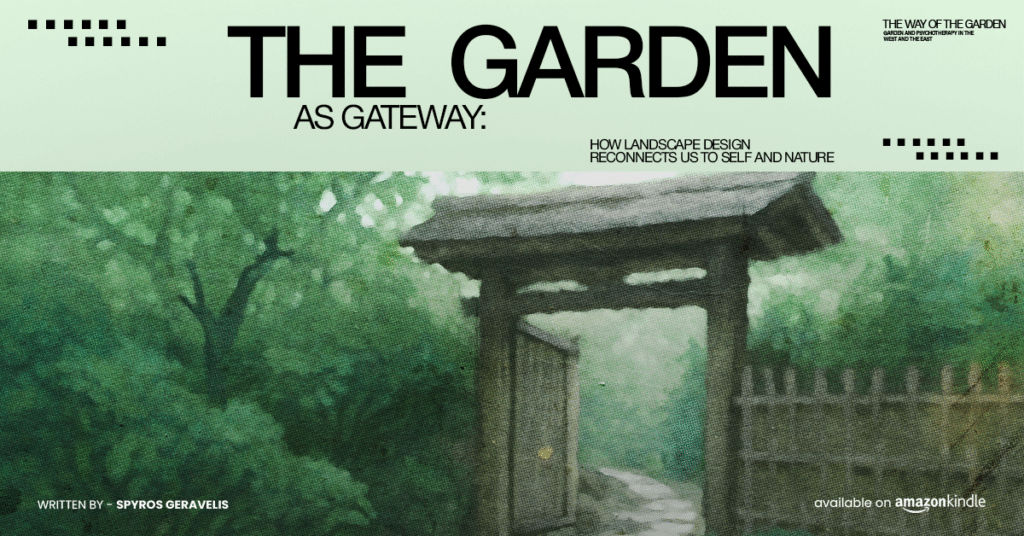Modern life distances us from two vital things: the natural world and our inner world. In The Way of the Garden, Spyros Geravelis argues that a garden—carefully designed and tended—can act as a gateway back to both. Drawing on Jungian psychology, contemporary neuroscience, and Japanese garden tradition, Geravelis shows that reconnecting to nature is not merely aesthetic; it is therapeutic and existential.
At the heart of Geravelis’s thesis is a simple observation: Western modernity foregrounds rational, linear thought and technological convenience, which has had a cultural cost. We’ve lost regular, embodied contact with the wild and with the parts of ourselves that think in images, dreams, and instincts. Jung’s notion of the unconscious — and the therapeutic potential of immersing the self in symbolic, nonverbal environments — becomes a guiding thread in the book. The garden is thus reframed as an architectural psychotherapy: a nonverbal place that invites the unconscious to speak through soil, stone, water, and light.
Geravelis pairs this psychoanalytic perspective with empirical research. He cites large-scale studies that show consistent mental-health benefits from spending time in green space; as the manuscript notes, spending at least two hours per week in nature is associated with measurable improvements in well-being across populations. When designers intentionally incorporate elements known to foster calm — fractal forms, soft colors, gentle water sounds — they create environments that support physiological down-regulation and reflective attention.
The East offers a host of practical approaches for creating such spaces. Shinrin-yoku, or forest bathing, encourages immersive, sensory engagement with woodland environments. Geravelis translates forest principles into garden design: layering vegetation, preserving a sense of mystery with hidden paths, and privileging native plants to invite wildlife and fragrant moments. The tea-garden ritual (roji → tsukubai → tea house) is offered as a model for designing transitional sequences that prepare visitors psychologically for contemplation. These are not mere cultural curiosities; they are techniques that align environment with mind.
But the gateway concept also requires maintenance. Geravelis insists that a healing garden must be modest, not ostentatious, and it must be actively cared for. Maintenance is itself a therapeutic practice: pruning, composting, and seasonal attention are ways to cultivate patience, humility, and connection. The Japanese wabi-sabi aesthetic — valuing transience and imperfection — becomes an ethical stance for the gardener: accept change, tend attentively, and let the garden age gracefully.
Crucially, Geravelis’s approach is democratic. Healing gardens are not reserved for spas or clinics; they can be scaled to balconies, courtyards, or community plots. Design principles—use of natural materials, avoidance of loud colors, incorporation of water, and paths that encourage mindful walking—translate across sizes and budgets. A patch of native herbs, a mossy stone, or a quiet bench can be enough to invite presence.
Ultimately, The Way of the Garden reframes landscape practice as a cultural remedy. The garden is both a tactile classroom and a sanctuary: it trains the senses, anchors the body, and offers the symbolic soil in which the inner life can grow. For urban dwellers starved for meaning, the garden is a practical invitation to re-enter a world where life is felt, not merely observed. If we accept Geravelis’s premise, then designing and caring for gardens is not a hobby — it is a form of civic and psychological repair.
Amazon Link: THE WAY OF THE GARDEN



